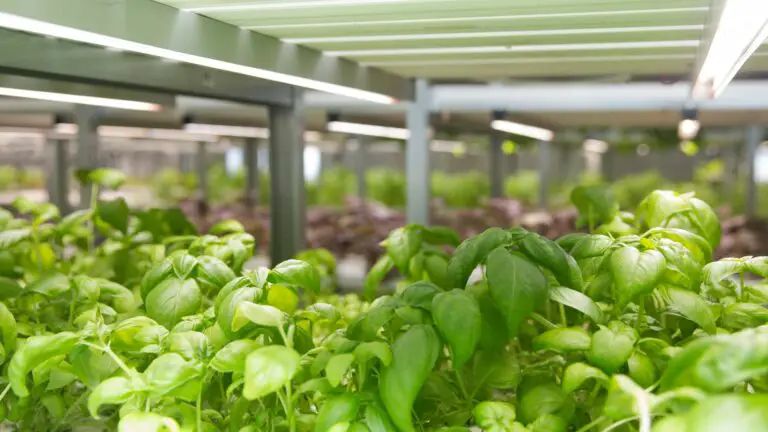What is the Cost Difference Between Hydroponic and Panoponica Technologies?
Understanding the cost difference between hydroponic and Panoponica technologies is crucial for investing in modern agricultural methods. Both systems represent advanced approaches to farming, but they differ significantly in terms of complexity and, therefore cost.
Hydroponic Systems: Cost Overview
Hydroponic systems, in general, can range from relatively inexpensive do-it-yourself setups to large-scale commercial installations.
The cost can vary based on factors as below.
- The size of the system
- The type of hydroponic method used (e.g., NFT, DWC, Ebb, and Flow)
- The level of automation.
The cost is as low as a few hundred dollars for a small home system. At the same time, commercial operations require an investment of several thousand to tens of thousands of dollars.
Panoponica Systems: Cost Overview
Panoponica technology, a more advanced and sophisticated version of hydroponics, naturally comes with a higher price tag.
- The integration of multi-level farming
- Advanced climate control
- Precise nutrient delivery systems
The above list adds to the complexity and cost. These systems are designed for maximum efficiency and yield, making them ideal for large-scale commercial farming. The cost for Panoponica systems can range from the higher end of tens of thousands to potentially hundreds of thousands of dollars, depending on the scale and sophistication of the installation.
Comparing Costs: Key Considerations
- Initial Investment: The initial cost of setting up a Panoponica system is generally higher than a traditional hydroponic setup due to its advanced features and technology.
- Operational Costs: Both systems have ongoing operational costs like electricity, water, and nutrients. However, the more advanced environmental controls in Panoponica systems may lead to higher energy consumption, affecting operational costs.
- Yield and Efficiency: While Panoponica systems are more expensive, they offer higher yields and better resource efficiency, leading to a better return on investment in the long run.
- Scalability: Panoponica systems are particularly suited for large-scale operations where the significant increase in productivity can justify the high initial investment.
- Customization: Custom solutions in either system can lead to additional costs. Panoponica, with its more advanced setup, might incur higher customization costs.
Maintenance and Upkeep Requirements for Hydroponic and Panoponica Systems
Maintaining and upkeeping hydroponic and Panoponica systems are essential for optimal performance and longevity. While both systems share some standard maintenance practices due to their hydroponic nature, the complexity of Panoponica systems introduces additional requirements.
Maintenance of Hydroponic Systems
Regular Monitoring
- Nutrient Levels: Regularly check and adjust the nutrient solution’s pH and electrical conductivity (EC).
- Water Temperature: Maintain an optimal temperature for the nutrient solution to ensure plant health.
- System Checks: Regularly inspect for leaks, clogs, or malfunctions in the irrigation system.
Cleaning and Sterilization
- Regular cleaning of the system components, including growing trays, reservoirs, and pumps, is crucial to prevent algae growth and pathogens.
- Periodic sterilization of the entire system, especially between crop cycles, to eliminate any harmful microbes.
Plant Management
- Monitoring plant health for signs of nutrient deficiencies, pests, or diseases.
- Pruning and training plants as needed to optimize growth.
Maintenance of Panoponica Systems
Advanced Monitoring
- In addition to the standard hydroponic checks, Panoponica systems require more detailed monitoring due to their multi-level setups and advanced environmental controls.
- Regular calibration of sensors and control systems that manage temperature, humidity, lighting, and CO2 levels.
Enhanced System Maintenance
- More frequent and detailed inspections of the multi-tiered structure to ensure structural integrity and proper functioning.
- Maintenance of additional equipment such as advanced LED lighting systems, climate control units, and automated nutrient delivery systems.
Intensive Cleaning and Sterilization
- Given the complexity and density of Panoponica systems, a more rigorous approach to cleaning and sterilization is necessary.
- Special attention to areas where moisture and humidity can accumulate, which are potential hotspots for fungal and bacterial growth.
Expertise and Training
- Operating a Panoponica system often requires a higher level of expertise. Regular training for staff on the latest best practices and technology updates can be beneficial.
- Access to technical support for troubleshooting advanced system components.
Balancing Efficiency with Maintenance
While both hydroponic and Panoponica systems share similarities in maintenance, the latter requires a more intensive approach due to its complexity and advanced features.
Regular monitoring, cleaning, system checks, and plant management are key for both. Still, Panoponica systems demand a higher level of precision and expertise.
The choice between these systems should consider not only the initial cost and potential yield but also the capacity to effectively meet their maintenance and upkeep requirements. Proper maintenance is crucial for ensuring the long-term success and sustainability of either system.
Final Thought
When considering the cost difference between hydroponic and Panoponica technologies, weighing the initial investment against the potential return is essential.
Hydroponic systems might be more suitable for smaller-scale operations or those with budget constraints.
In contrast, Panoponica technology, with its higher initial cost, is ideal for large-scale commercial ventures where maximizing yield and efficiency is crucial.
The choice depends on the specific goals, budget, and scale of the agricultural project.
Thank you for reading!



